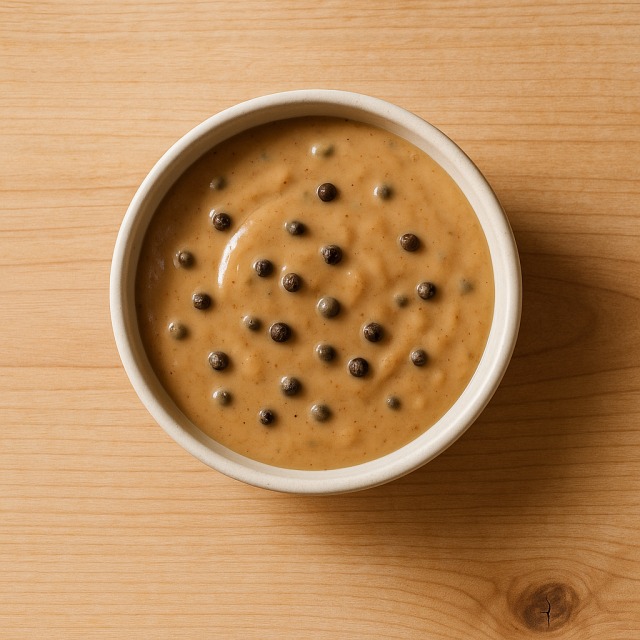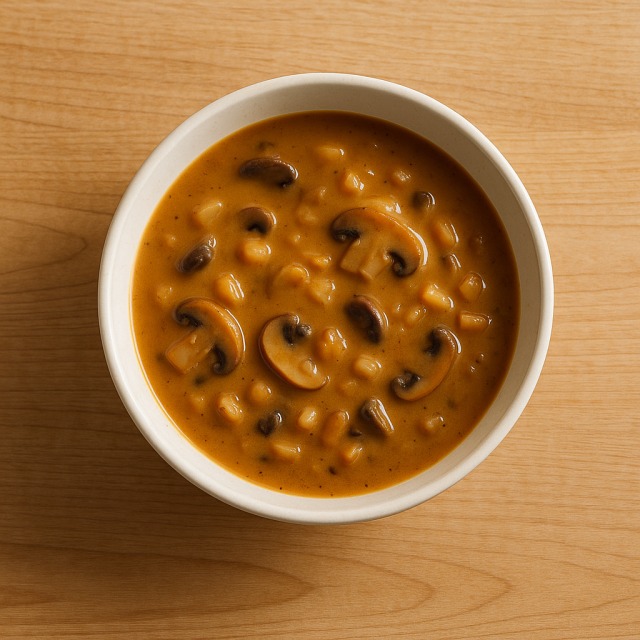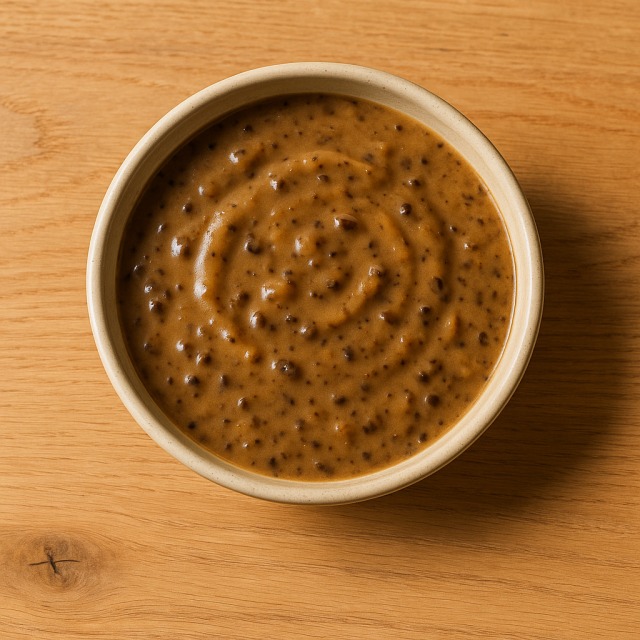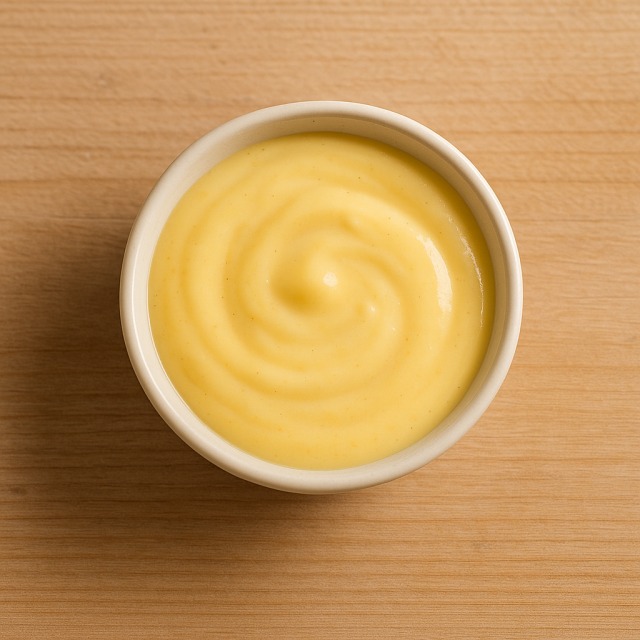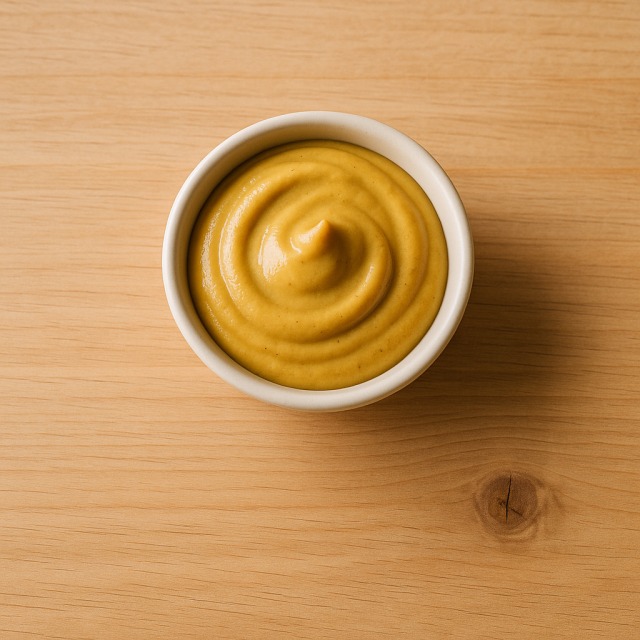Calorie Chart / Seasoning & Sauces / Roquefort sauce
How Many Calories Are in Roquefort sauce?
Calculation of the nutritional value & Recommended Dietary Intake of roquefort sauce
For g and a calorie requirement of kcal
| Calories 61 kcal | Proteins 1.7 g | Lipids 6 g | Carbohydrates 0.2 g |
| 3% | 2% | 9% | 0% |
Health benefits of roquefort sauce
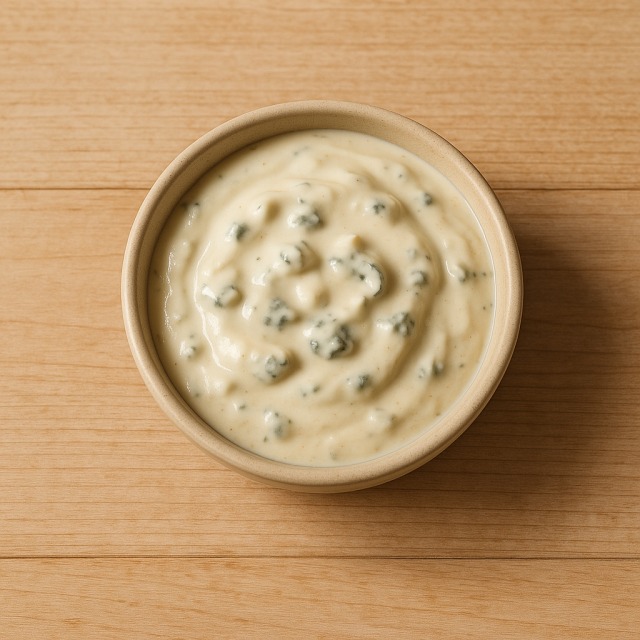
Roquefort sauce - 100g
Calories 408 kcal
Proteins 11 g
Lipids 40 g
Carbohydrates 1 g
Roquefort sauce is a concentrated dairy preparation made with Roquefort blue cheese and cream. As such, it is considered a high-calorie condiment because of its 40 g of lipids per 100 g. Its richness in milk proteins (11 g/100 g) supplies all essential amino acids, and the sauce is also an excellent source of calcium and phosphorus, two minerals involved in bone health. Vitamins A and B12, naturally present in blue cheeses, support immune function and red-blood-cell production.
Penicillium roqueforti, the mold that gives the cheese its characteristic veins, has been studied for its supposed antioxidant and antimicrobial properties, although evidence in humans remains limited (hence the term "supposed"). Historically, Roquefort cheese received a royal monopoly from Charles VI in 1411, and the tradition of transforming it into a creamy sauce emerged in French gastronomy in the 20th century to accompany grilled meats.
Because the preparation is energy-dense, small portions deliver many calories quickly, which can be useful for athletes needing a caloric surplus but requires moderation for weight-loss plans.
Tips for incorporating roquefort sauce into a balanced diet
Owing to its high calories, a tablespoon of Roquefort sauce (≈30 g) is often enough to flavor a dish. Pair it with lean protein such as a grilled sirloin steak or a roasted turkey cutlet, and balance the plate with steamed broccoli or a crisp green salad. This combination supplies satisfying proteins while preventing an overload of calories.
In a lighter recipe, whisk two parts light crème fraîche light with one part Roquefort sauce and a splash of semi-skimmed milk; heat gently until smooth. You keep the characteristic flavor while cutting almost one-third of the calories.
For pasta lovers, drizzle the sauce over al dente pasta and add sautéed mushrooms. Finish with a side of raw carrot sticks to introduce crunch and fiber that help regulate the meal's total calories.
The intense taste also works in gourmet burgers: spread a thin layer on a toasted brioche bun, add a grilled 5% fat beef patty, caramelized onions and fresh lettuce. One teaspoon is enough to transform the flavor profile while controlling calories.
Frequently Asked Questions
- How many calories are in Roquefort sauce?
- Roquefort sauce provides 408 kcal per 100 g.
- Is Roquefort sauce suitable for a low-calorie diet?
- Because it is high in calories and fats, it should be used sparingly—limit yourself to one tablespoon (≈120 kcal) and surround it with low-calorie foods such as zucchini or asparagus.
- Can I freeze leftover Roquefort sauce?
- Yes. Cool the sauce, portion it in airtight containers and freeze for up to 3 months. Thaw slowly in the refrigerator and reheat over low heat to avoid separation.
- Is Roquefort sauce vegetarian?
- Traditional Roquefort cheese is made with animal rennet, so strict vegetarians should check labels or opt for versions made with microbial rennet.
- How can I lighten the calories without losing flavor?
- Blend equal parts Roquefort sauce and plain yogurt or light fromage blanc 0%; the mixture keeps the blue-cheese punch while cutting calories roughly in half.
Similar foods
Information provided by Calorie Menu may contain inaccuracies or errors. It cannot, under any circumstances, substitute medical advice or medication.
